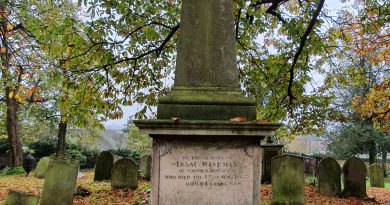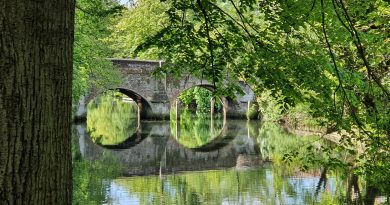200 Years Ago in Norwich : Murder by Blackfriars Bridge
![]()
Back to my series of posts about what was happening in Norwich 200 years ago this week. And, it’s yet another reminder of just how dangerous a city it was at that time, crime seemed to be rocketing and this is another example of the problems that were faced. The Norwich Mercury reported:
“On Sunday last an inquisition was held at the Workhouse, in the parish of St. Andrew, before Mr William Bell, coroner, on the body of Elizabeth Chaney, aged 19 years, who was picked up in the River Wensum, near Blackfriars Bridge. Septimus Sterey and John Plummer deposed, that they took the body out of the water that morning about 9 o’clock; marks of violence appeared on her face and blood on her cap. Jane Nixon, of the parish of St. Andrew, stated that she has known the deceased upwards of seven months, who, occasionally, came to her house to clean; that deceased was a very steady girl, and was a good character; had in her pocket, when she left witness’s house, one shilling in silver, which she had not had when found; deceased left between 10 and 11 o’clock on Saturday night.
John Cook, living in the Water Lane, in the parish of St. George’s Colegate, said he heard a scuffle in the lane about 11 o’clock on Saturday evening; went to the door, and saw a man and woman (cannot say that she was the deceased). The man appeared to use violence, and the woman ran away; the man followed her. The man had on a dark coloured coat and light trowsers [I like this old style of spelling trousers]. Jeremiah Sexton stated he lived in Water Lane; on the Saturday morning, sweeping there, found a pair of pattens near the staithe, and by the water side saw foot steps. Sarah Nixon deposed, that the deceased lodged at her father’s, and slept with her; knew the pattens to belong to the deceased by the strings, for she gave them to her.
The Coroner said, as there was no evidence adduced to prove how or by what means the poor girl came into the water, the Jury could return no other verdict than found drowned under very suspicious circumstances.”
As the Coroner hinted, this was a murder, but with no evidence to ever prove anything, but it seems to me to the worst of domestic abuse. I didn’t know what a ‘patten’ was, but it’s a clog or sandal. St. Andrew’s Workhouse, housed in St. Andrew’s Hall, was in operation between 1712 and the 1850s, before larger premises were constructed in Dereham Road. Also, Water Lane is now known as Hansard Lane. These were certainly challenging times for the city.



